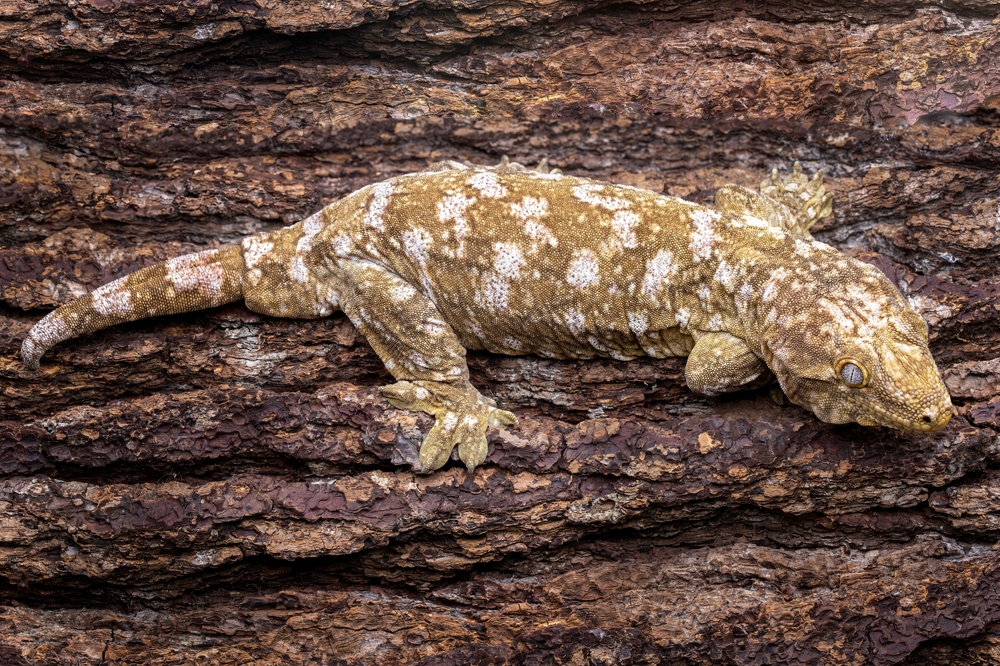Rhacodactylus leachianus
The New Caledonia Giant Gecko Rhacodactylus leachianus stands as the largest known species of gecko, often reaching lengths of 25 to 35 cm (10 to 14 inches) or more. Their large eyes and sticky toe pads make them perfectly suited to an arboreal life in the canopy.
New Caledonia giant geckos have diverse colouration and patterning, varying from locality to locality. Many of these localities and “lines” can be found in the hobby today. From vibrant greens to deep browns and greys, their hues help them blend seamlessly into the lush foliage of their Pacific home in New Caledonia. Their colouration perfectly mimics the thick tree trunks that they press their bodies against to remain undetected by aerial predators during the day. .

In captivity, these large geckos require a spacious, vertically oriented terrarium with ample climbing opportunities and hiding spots that mimic their natural habitat. Thick, large corkbark tubes are great for simulating the broad branches of the forest canopy that these animals occupy in the wild.
The keeper must maintain moderate temperatures around 24-27°C (75-80°F) and humidity levels of 60-80%. A good quality spot bulb with a UVB tube should achieve the correct temperatures and provide a naturalistic spectrum of wavelengths.
Rhacodactylus leachianus are omnivorous meaning they should be fed a mix of prepared diets and insects. The keeper should look for a formula that provides all the necessary nutritional elements that the gecko needs to avoid the need to add supplements. This is particularly important with “leachies” as they are reported to be more fussy than other New Caledonia geckos. Insects should vary in species and size and act primarily as a form of enrichment to support the primary powdered/prepared fruit-based diet.
Rhcodactylus leachianus occupy the same habitat as crested geckos on the Isle of Pines. Although they live higher up in the canopy, the following habitat montage can help inspire new setups…
